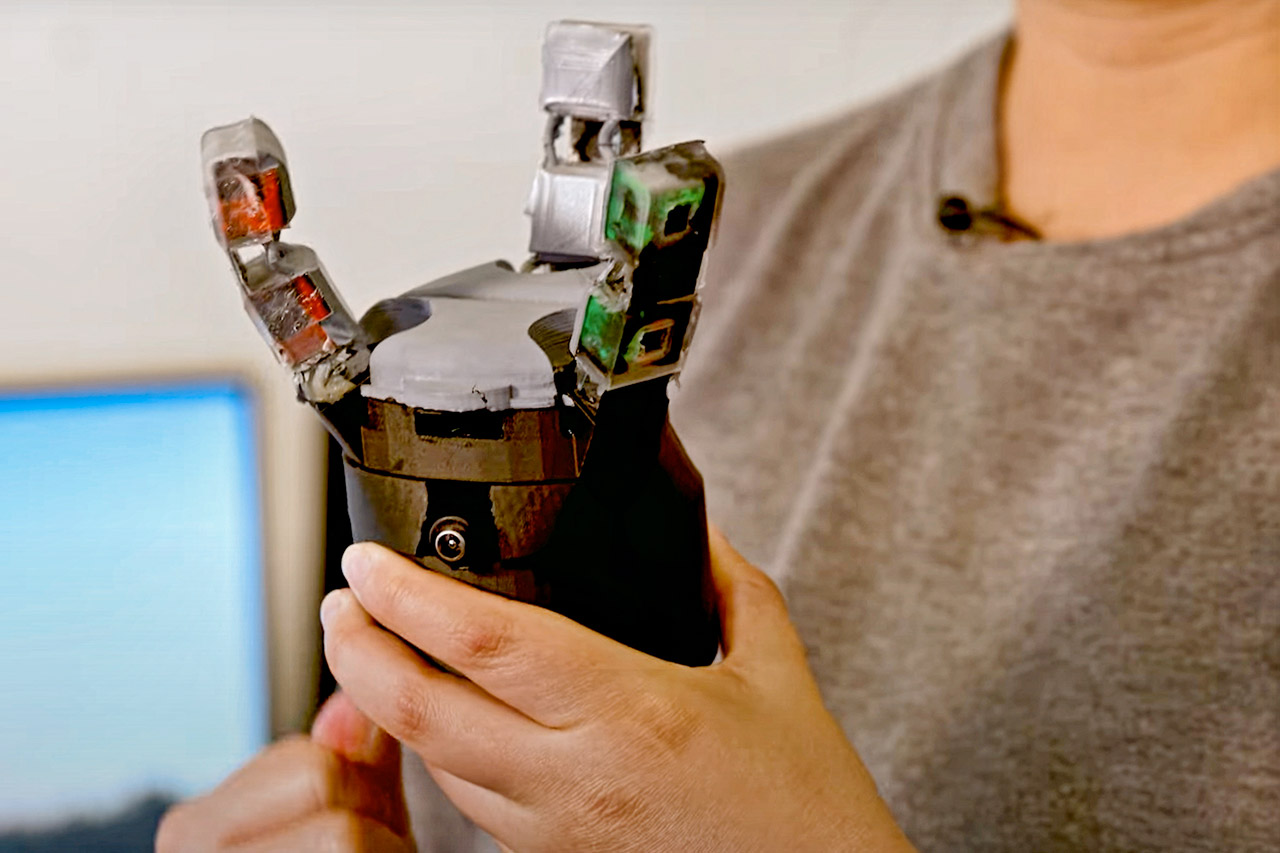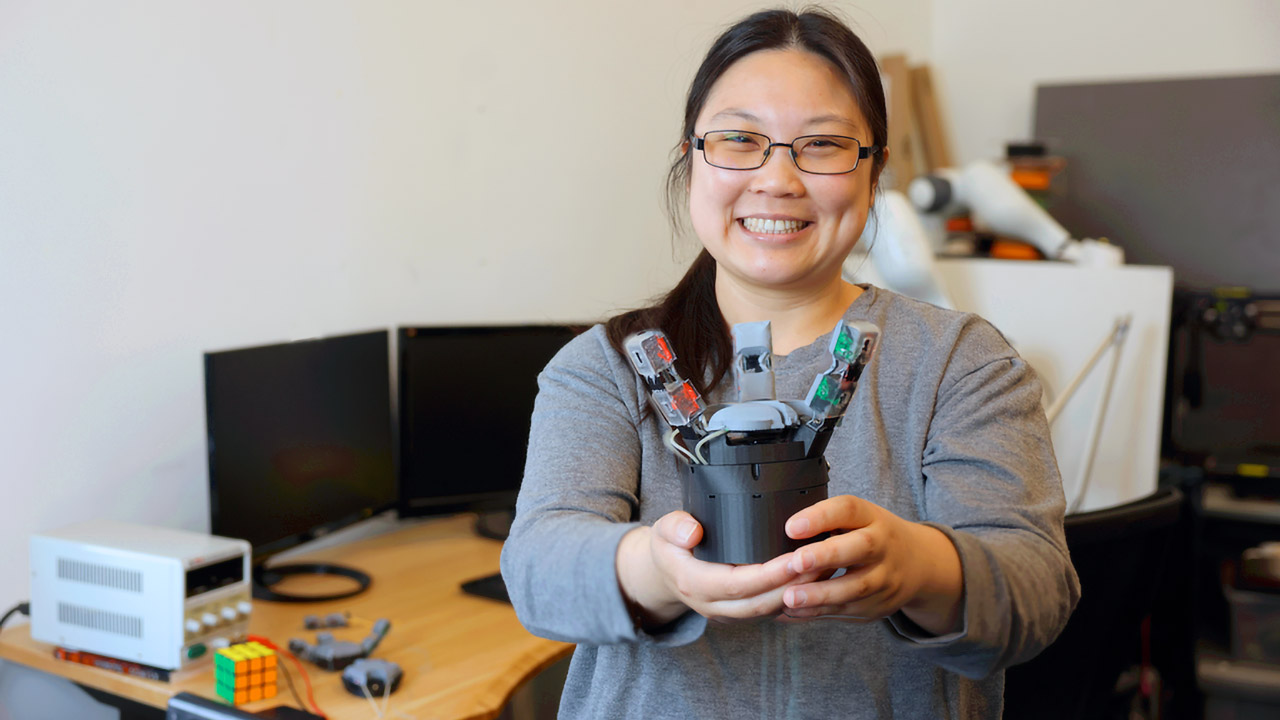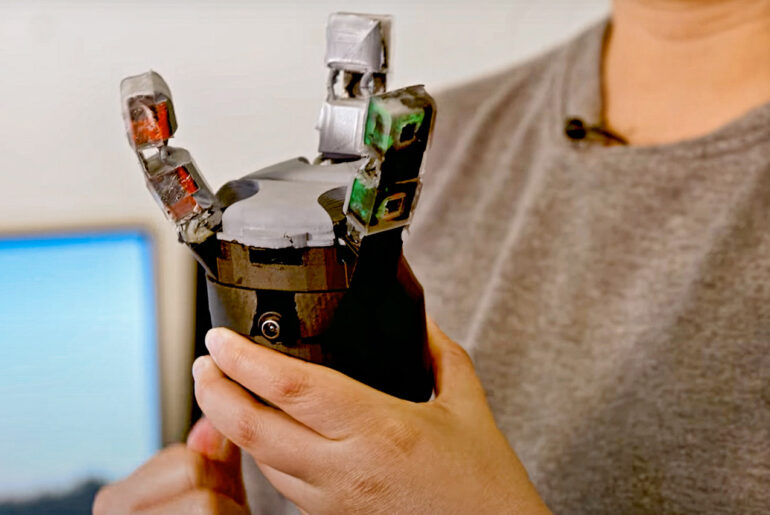
MIT CSAIL researchers, led by Sandra Q. Liu, have developed a robotic palm that can simulate human touch, called GelPalm. This creation utilizes advanced sensors for a highly sensitive touch, enabling it to handle objects with more detailed and delicate precision.
GelPalm basically has a gel-based, flexible sensor embedded directly into the palm, similar to the soft, deformable nature of human hands. This sensor uses a special color illumination technology with red, green, and blue LEDs to light an object. A camera then uses those colors to capture reflections. This combination generates detailed 3D surface models for precise robotic interactions. The robotic fingers, called ROMEO (“RObotic Modular Endoskeleton Optical”), are made from flexible materials and boast similar sensing technology as the palm.
- One-Click Automatic Printing: Experience hassle-free 3D printing with the Adventurer 5M Series. Enjoy automatic bed leveling for flawless first...
- 12X Ultra Fast Printing: Featuring a Core XY structure with 600mm/s travel speed and 20000mm/s² acceleration, the AD5M maximizes efficiency, reduces...
- Smart and Efficient Design: Quick 3-second nozzle changes, a high-flow 32mm³/s nozzle, and fast 35-second warm-up to 200°C deliver stable high-speed...

Photo credit: Michael Grimmett/MIT CSAIL
We draw inspiration from human hands, which have rigid bones surrounded by soft, compliant tissue. By combining rigid structures with deformable, compliant materials, we can better achieve that same adaptive talent as our skillful hands. A major advantage is that we don’t need extra motors or mechanisms to actuate the palm’s deformation — the inherent compliance allows it to automatically conform around objects, just like our human palms do so dexterously,” said Sandra Q. Liu, recent MIT graduate and lead designer of GelPalm.










